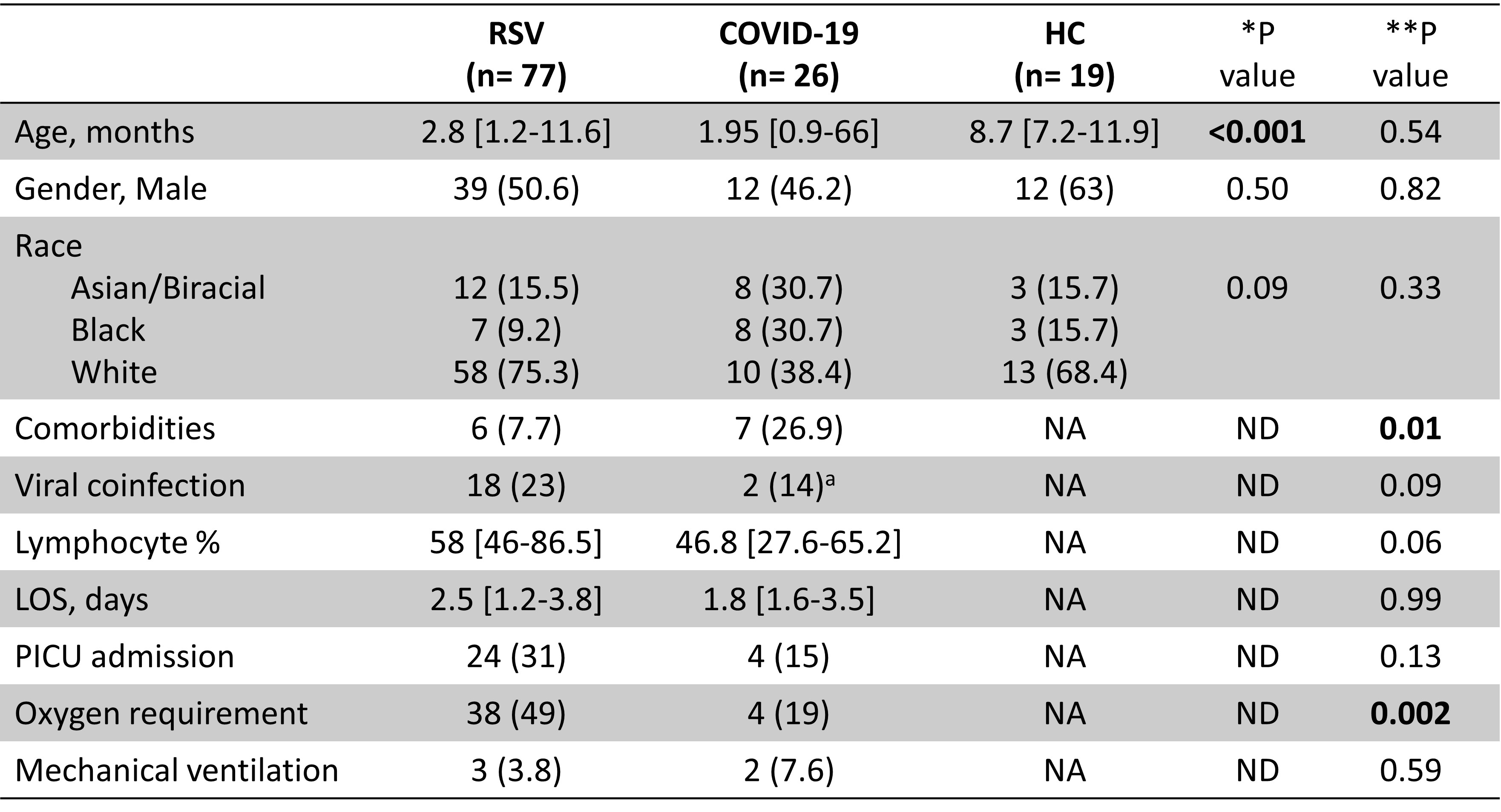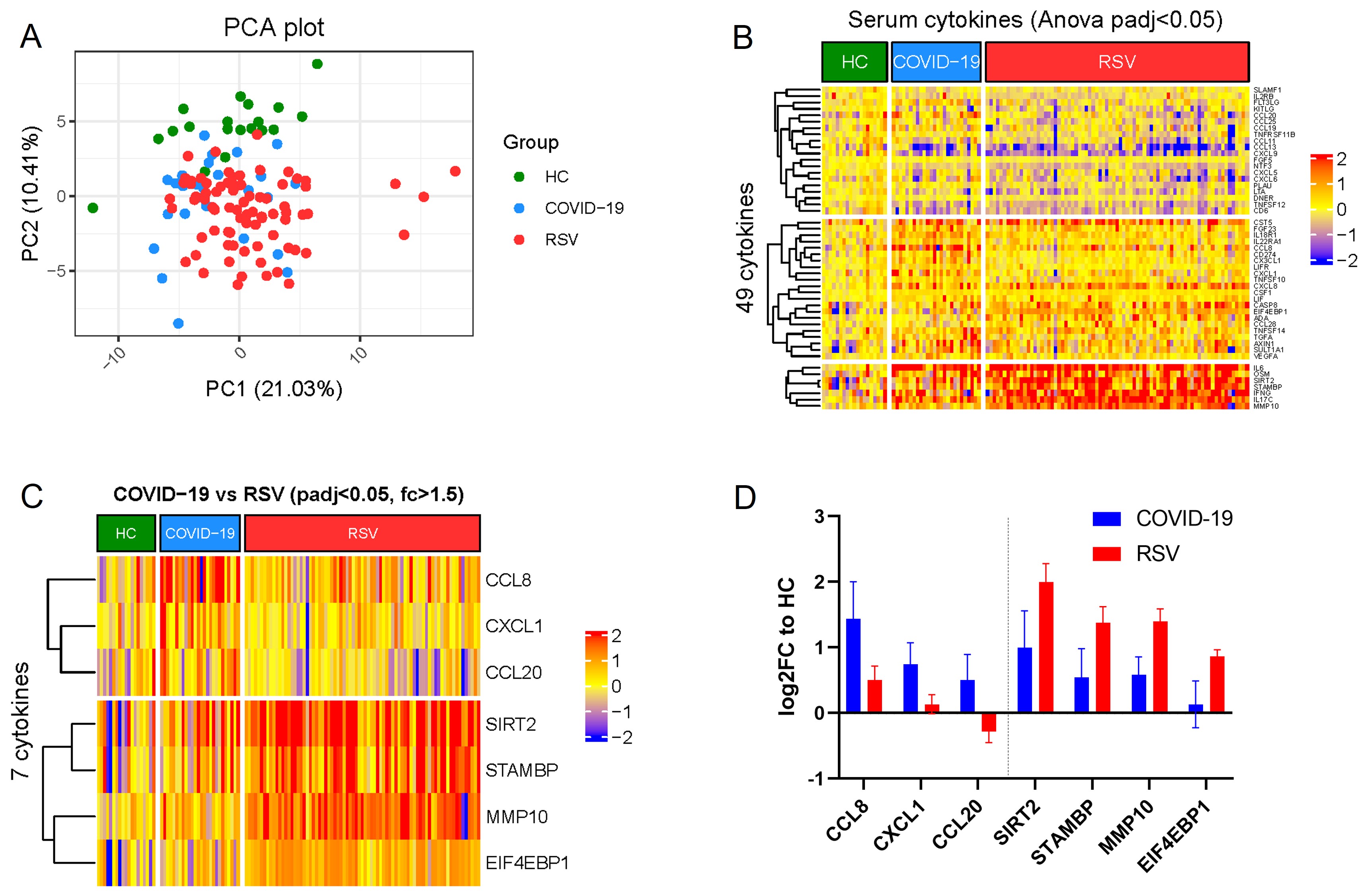Infectious Diseases
Infectious Diseases 1
620 - Infants hospitalized with SARS-CoV-2 versus RSV infection exhibit different systemic cytokine profiles
Publication Number: 620.225
.jpg)
Raquel Giacomelli Cao, MD PhD (she/her/hers)
ID fellow
Nationwide Children's Hospital
Columbus, Ohio, United States
Presenting Author(s)
Background:
Cytokines play an essential role in the immune response to viral infections exhibiting considerable antagonistic and synergistic effects that regulate both local and systemic inflammatory responses.
Objective: To define and compare systemic cytokine responses in infants hospitalized with COVID-19 and RSV infection (RSVi).
Design/Methods: This was a prospective study of a convenience cohort of infants hospitalized with PCR confirmed SARS-CoV-2 or RSV infection, as well as pre-pandemic healthy controls (HC). Clinical parameters and blood samples were obtained at enrollment, and cytokine analysis performed using a 92-cytokine inflammation panel (Olink platform). Statistical analyses were performed in R environment.
Results:
We enrolled 121 infants, 26 with COVID-19, 77 with RSVi and 18 healthy infants as a comparator control group. Presence of comorbidities was significantly more common in infants with COVID-19 (26.9%) (p=0.01), while oxygen requirement was significantly more frequent in infants with RSVi (49%) (p=0.02). No statistical differences were identified in terms of lymphocyte counts, length of stay, pediatric intensive care unit admission, and need for mechanical ventilation. Viral coinfection was observed in 14% and 23% of infants with COVID-19 and RSVi, respectively, including rhinovirus/enterovirus, adenovirus, parainfluenza virus, and other coronaviruses (Table 1). Principal component analysis (PCA) revealed clustering of the global cytokine profiles separating HC from infants with COVID-19 and RSVi (Figure 1A). Multiple comparison analysis among the three groups yielded 49 significantly different cytokines that clustered in three groups (Figure 1B). A first cluster that included cytokines such as CCL11, CCL19 and TNFSF12 that were lower in both COVID-19 and RSVi compared with HC; a second cluster with CCL8, CXCL8 and CASP8 that were mildly increased in both COVID-19 and RSVi; and a third cluster that included IL6, IL17C and IFN-ɣ that were markedly increased in both viral groups compared with HC (ANOVA padj< 0.05). Direct comparison between COVID-19 and RSVi (padj< 0.05 and FC >1.5) identified 7 statistically different cytokines. Chemoattractant cytokines, such as CCL8, CXCL1, CCL20 were increased in COVID-19, while immunoregulatory cytokines, including SIRT2, STAMBP, MMP10 and EIF4EBP1 were increased in RSVi (Figure 1C-D).
Conclusion(s):
Analysis of systemic cytokine profiles identified shared but also distinct cytokine responses in infants with SARS-CoV-2 and RSVi suggesting important differences in the pathogenesis of these viral infections. 

